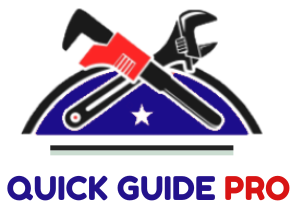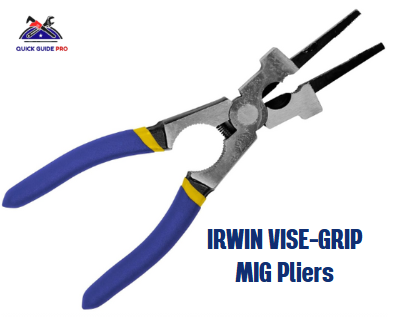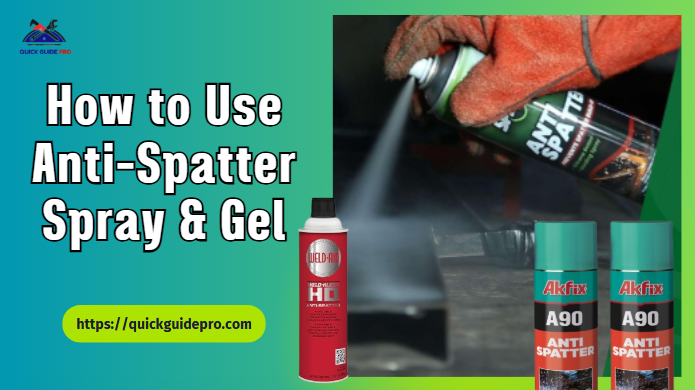
Tackle your challenges of welding spatter by learning how to use anti spatter spray & gel!
When it comes to deal with weld spatter, anti-spatter is a good option to use before welding. Although you have to spend a few bucks, it’s one of those popular solutions for easier cleanup.
Welding anti-spatter has the effect of stopping those tiny drops of metal from sticking to the work surface or the surrounding area. It also prevents the build-up of spatter on the tool’s contact tip and nozzles.
It’s good to know that anti-spatter doesn’t prevent or eliminate spattering. The chemistry of anti-spatter non-stick spray or gel simply makes a coating on the metal surface. When spatter falls on the sprayed area, it sticks to the coating, not the base metal. That makes it easy to remove.
However, how to use welding anti-spatter spray?
This guide will help you learn the right way to apply anti-spatter spray and gel.
So, without further ado, let’s proceed.
Table of Contents
How to Use Anti Spatter Spray- Step-by-Step Guidelines
Although weld anti-spatter products help to prevent the spatter from sticking to the weld area and work piece, excessive amounts, however, may introduce weld defects like porosity.
Anti-spatter welding Sprays are mostly water-based. So, if you spray too much on the weld piece or consumables that may drip into the weld, it can lead to porosity and weld contamination.
Welding anti-spatter products are also notoriously messy and tend to stick to tools, equipment, and the floor, which creates a slipping hazard.
So, it’s important to apply this product correctly.
Using the Anti-Spatter Spray is pretty simple. There are user instructions right on the spray bottle or container. However, it is not unusual to make some mistakes when applying this product.
How to Use Anti Spatter Spray
Follow the guidelines below to learn how to use welding anti-spatter spray.
Step 1: Before spraying the solution, wipe off your work piece and the surrounding weld area.
Step 2: Shake the can or spray bottle as directed on the back of the product.
Step 3: Spray a light coating over your workpiece and weld area.
Step 4: As mentioned earlier, spatter sticks to the anti-spatter coating, making it easy to remove from the metal surface.
Instructions for how to remove spatter after applying the solution can typically be found in the spray can. However, the cleaning process is also straightforward.
How to Clean Weld Spatter
Once you’re finished welding, you can easily wipe away the spatter droplets with a clean cloth instead of requiring a grinder. If it fails, you can try to rub it with a wire brush. If nothing works, the best way to remove the weld spatter is a good cleaning solution and water that should get the job done.
Notably, the water-based aerosol welding anti-spatters make cleanup much easier and faster.
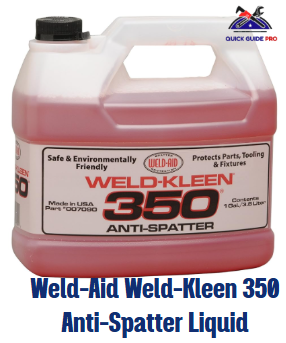
🚫 Cautions:
- Avoid applying a heavy amount of solution, as this may lower the weld’s strength and quality.
- Only spray the solution if you are in an open or well-ventilated area, as some anti-spatter may contain a toxic element or produce toxic fumes.
How to Use Anti Spatter Gel
Anti-spatter is also available in gel format. The gel also creates a weld spatter-resistant coating to prevent spatter from sticking around your welding tool’s contact tip and nozzle.
Some weld spatter gel allows you to dip the tip or nozzle cold or hot.
Step 1: Start with a clean nozzle and torch tip. With welding pliers or a wire cleaning brush, clean these parts first.
Step 2: Dip the nozzle or contact tip roughly 1 inch into the welding nozzle gel. Let the excess drip off right back into the anti-spatter container.
Note: If the gel is directed to be used only when the nozzle and contact tips are warm, warm up these parts by running a few inches of starter beads on a spare metal piece.
Step 3: Tap or brush any bbs right off the nozzle or tip and re-dip as required.
Step 4: Clean up the welding spatter from the torch tip and nozzle after you’ve done your welding operation. It’ll ensure that your tools are ready to go for the next time.
To get the job done, gently scrub off with a wire cleaning brush or simply wipe away the spatter with a cloth.
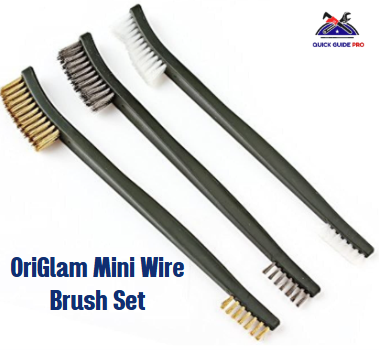
Final Thoughts: How to Use Anti Spatter Spray & Gel
This is all about how to prevent weld spatter from sticking by using anti-spatter.
There are different ways to deal with welding spatter. But you have to decide if you want to save money or time.
If spending a few bucks isn’t a problem for you, I recommend using the anti-spatter products. It is the best way to clean weld spatter.
Use the best welds anti-spatter sprays & gel to get the best results and a clean job.

I’m Ivan D. Mitchell. I’m the Chief Engineer, Manufacturing Engineering Tool and Launch, specialising in automotive equipment design and build which meets World Class Manufacturing methodology. I have 15 years of work experience as a Tooling Specialist on some of the leading automotive manufacturing companies. When I launched this site, I wanted to create a platform where you’ll get everything about tools in one place. I also wanted to share my experience in the tool industry. I’ll do my best to share the information you need to truly make your tool using experience better. I hope you find our guides, reviews, information HELPFUL. If you have any inquiries, I’m always here to help you.
